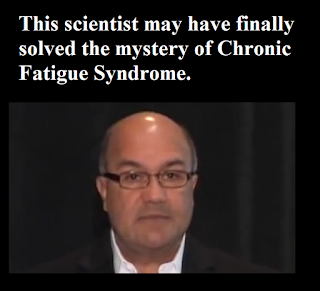Will the Montoya cytokine study show that Chronic Fatigue Syndrome is Kaposi's Sarcoma Inflammatory Syndrome?
'Findings show CFS/ME is inflammatory'
Lead study author Dr. Jose Montoya and his colleagues published their findings yesterday, in the Proceedings of the National Academy of Sciences, and they suggest that that the concentration of cytokines in the bloodstream is relevant to the acuteness of CFS/ME symptoms.
https://www.medicalnewstoday.com/articles/318714.phpAnother HHV-8- associated condition, the KSHV inflammatory cytokine syndrome (KICS), has been more recently described.48-50 Patients with this syndrome display MCD-like inflammatory symptoms, but do not have pathological findings of MCD. Patients with KICS are frequently critically ill and demonstrate marked elevations in IL-6 and IL-10, as well as high plasma HHV-8 viral loads. KICS may contribute to the inflammatory symptoms seen in some patients with severe KS or PEL, and there may be significant clinical overlap between these conditions.
Chronic Fatigue Syndrome patients may have undiagnosed internal Kaposi's Sarcoma.
Prevalence in the Cerebrospinal Fluid of the Following Infectious Agents in a Cohort of 12 CFS Subjects
Susan Levine
Published online: 04 Dec 2011
ABSTRACT
Over the last decade a wide variety of infectious agents has been associated with the chronic fatigue syndrome (CFS) as potential etiologies for this disorder by researchers from all over the world. Many of these agents are neurotrophic and have been linked previously to other diseases involving the central nervous system (CNS). Human herpes virus-6 (HHV-6), especially the B variant, has been found in autopsy specimens of patients who suffered from multiple sclerosis. Because patients with CFS manifest a wide range of symptoms involving the CNS as shown by abnormalities on brain MRIs, SPECT scans of the brain and results of tilt table testing we sought to determine the prevalence of HHV-6, HHV-8, Epstein-Barr virus (EBV), cytomegalovirus (CMV), Mycoplasma species, Chlamydia species, and Coxsackie virus in the spinal fluid of a group of 12 patients with CFS. Although we intended to search mainly for evidence of actively replicating HHV-6, a virus that has been associated by several researchers with this disorder, we found evidence of HHV-8, Chlamydia species, CMV and Coxsackie virus in 6/12 samples. Attempts were made to correlate the clinical presentations of each of these patients, especially the neurological exams and results of objective testing of the CNS, with the particular infectious agent isolated. It was also surprising to obtain such a relatively high yield of infectious agents on cell free specimens of spinal fluid that had not been centrifuged. Future research in spinal fluid analysis, in addition to testing tissue samples by polymerase chain reaction (PCR) and other direct viral isolation techniques will be important in characterizing subpopulations of CFS patients, especially those with involvement of the CNS.
https://www.tandfonline.com/doi/abs/10.1300/J092v09n01_05













